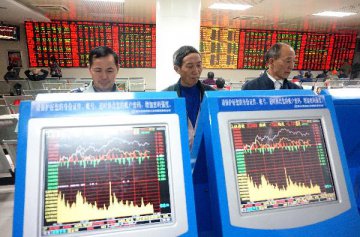The leverage ratio of China's financial sector continued to fall in the second quarter of the year, retreating to the level of 2014, according to a leading Chinese think tank.
The leverage ratio measured by asset decreased to 64.3 percent at the end of Q2 from 69.7 percent at the end of 2017, according to a report from the Chinese Academy of Social Sciences (CASS).
Meanwhile, the leverage ratio measured by debt dropped to 61.6 percent from 62.9 percent, the report said, noting that stronger regulation is accelerating the deleveraging process of the financial sector.
The report also pointed out that the leverage ratio of China's real economy was basically stable at 242.7 percent at the end of Q2, up slightly from 242.1 percent at the end of 2017.
While the household leverage ratio rose 2 percentage points in the first half of the year, the leverage ratios of non-financial enterprises and the government fell, the report showed.
The household leverage increased at a slower rate than the same period last year, pointing to low risks in household debts, according to Liu Lei, a researcher with the Center for National Balance Sheet under the National Institution for Finance & Development of the CASS.
"With home prices stabilizing, the household leverage ratio is expected to become steady in the future," Liu said.
The leverage ratio measured by asset decreased to 64.3 percent at the end of Q2 from 69.7 percent at the end of 2017, according to a report from the Chinese Academy of Social Sciences (CASS).
Meanwhile, the leverage ratio measured by debt dropped to 61.6 percent from 62.9 percent, the report said, noting that stronger regulation is accelerating the deleveraging process of the financial sector.
The report also pointed out that the leverage ratio of China's real economy was basically stable at 242.7 percent at the end of Q2, up slightly from 242.1 percent at the end of 2017.
While the household leverage ratio rose 2 percentage points in the first half of the year, the leverage ratios of non-financial enterprises and the government fell, the report showed.
The household leverage increased at a slower rate than the same period last year, pointing to low risks in household debts, according to Liu Lei, a researcher with the Center for National Balance Sheet under the National Institution for Finance & Development of the CASS.
"With home prices stabilizing, the household leverage ratio is expected to become steady in the future," Liu said.



















Latest comments